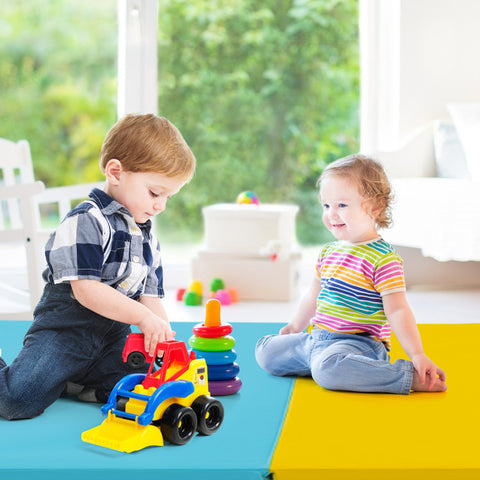News
The Science Behind Non-Slip Surfaces in Gymnastics Mats
When choosing a gymnastics mat, most buyers focus on thickness or portability. But one feature often overlooked is the non-slip surface. The grip of a mat can make the difference between a safe landing and a dangerous slip, especially during fast-paced routines. Understanding how non-slip technology works can help you make a smarter buying decision.

Why Non-Slip Surfaces Matter
Gymnastics involves rapid movement, sudden stops, and precise landings. A mat that slides or shifts under pressure increases the risk of injury. Non-slip surfaces keep the mat firmly in place, allowing athletes to focus fully on performance.
How Non-Slip Technology Works in Gymnastics Mats
- Textured Vinyl Layers – Most high-quality mats use a textured vinyl cover that increases friction.
- Anti-Skid Bottoms – Rubberized or foam-grip bottoms prevent mats from moving on hardwood, tile, or concrete.
- Dual-Sided Grip – Some mats are designed with both top and bottom grip features for added stability.
Benefits of Non-Slip Mats for Gymnasts and Families
- Enhanced Safety – Reduces slips during jumps, flips, and stretches.
- Confidence Boost – Athletes can attempt new skills knowing the mat won’t slide.
- Multi-Surface Use – Non-slip mats stay secure on wood, tile, or carpet.
- Great for Home Gyms – Families using mats indoors get peace of mind with extra grip.
Tips for Maintaining Non-Slip Mats
- Keep the underside free from dust and dirt, as debris reduces grip.
- Avoid harsh cleaning chemicals that can wear out the anti-skid coating.
- Store mats flat or folded properly to prevent curling edges that might affect stability.
Final Thoughts
Non-slip technology may seem like a small feature, but it plays a huge role in gymnastics safety and performance. Whether you’re a beginner or training at a professional level, investing in a mat with strong non-slip features ensures that every practice session is safer and more effective.

